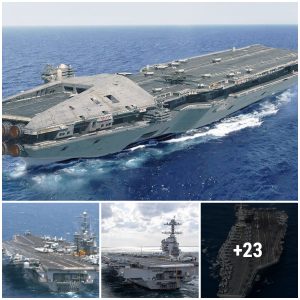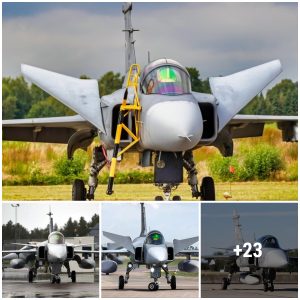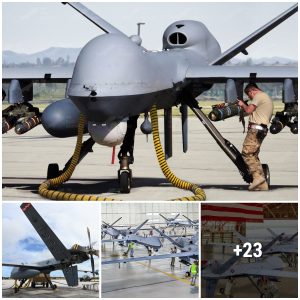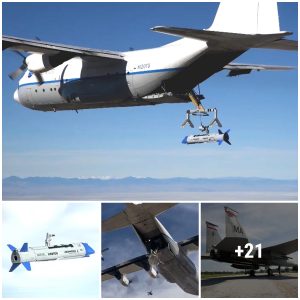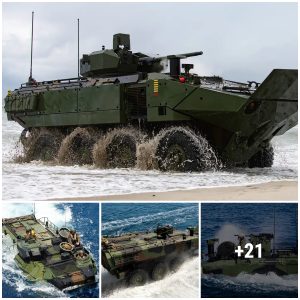The Pakistani Air Force is operating both Chinese-origin fighters simultaneously, the JF-17 Block 3 and the J-10C. These are all China’s most advanced light fighters.
Pakistani media have reported that Pakistan has received a second batch of J-10C fighter jets from its ally China. Accordingly, six more J-10C aircraft have arrived in the country, implying that the second batch has been delivered by China. Pakistan’s fleet of J-10C aircraft now stands at 12 following the delivery of the second batch.

Meanwhile, according to a report in January, Pakistan will soon add 50 more JF-17 Block III Thunder jets to replace older planes. Block III is the most modern version of the JF-17 series, a fighter jointly developed by China and Pakistan. Thus, Pakistan is the first country outside China that owns two of China’s most advanced light fighter models.
The latest iteration of the J-10, the J-10C, entered PLA service in the spring of 2018 with an estimated 150 operational by the end of 2020. It served as a complement to the heavier J-16 and J-20 fighters produced in parallel, with much lower maintenance needs and operational costs allowing it to be very widely deployed to replace older aircraft such as the J-7. Notable features include thrust vectoring engines, integration of an AESA radar, new avionics and electronic warfare systems, and perhaps most notably access to the PL-15 and PL-10 air to air missiles.
A comparable set of improvements was subsequently applied to the JF-17 program similarly revolutionised the fighter’s capabilities, with the new JF-17 Block 3 variant produced for export as a lighter complement to the J-10C and seeing its first flight in December 2019.
While both the J-10 and the JF-17 are lightweight fighters, the latter could be categorised as a ‘very light’ fighter comparable to the American F-20 or Swedish Gripen while the former is comparable in weight to the American F-16 or Japanese F-2. The J-10, like the F-16, uses a single engine from a heavyweight twin engine fighter class – in the F-16’s case the F110 engine from the F-15 and in the J-10’s case the WS-10 from the J-11 and J-16 fighters. The ‘very light’ fighters by contrast borrow engines from twin engine medium weight rather than heavyweight fighters – the JF-17 using a heavily enhanced version of the Russian MiG-29’s RD-33 engine. Thus while the J-10C is comparable in performance to the American F-21 – a heavily enhanced F-16 variant – the JF-17 Block 3 is comparable to the Swedish-American Gripen E with both developed under similar design philosophies and prioritising similar capabilities.

The JF-17, by virtue of it being lighter and using a smaller engine than the J-10, is not only significantly cheaper to manufacture but is also much cheaper and easier to operate and maintain. The J-10 by contrast is significantly more costly both to operate and to manufacture, although still very inexpensive relative to medium or heavyweight jets like the J-16, but benefits from a much better flight performance.
The J-10 can carry a heavier radar, and its powerful WS-10 engine provides it with an unrivalled degree of manoeuvrability and the world’s highest climb rate for a single engine fighter. The JF-17 Block 3, while overall less capable than the J-10C, can still pose a comparable threat in beyond visual range combat due to its similar avionics and its access to PL-15 and PL-10 standoff and short ranged air to air missiles. The PL-15 is widely considered the most capable missile of its kind and benefits from near unique AESA radar guidance and an estimated 200-300km range, while the PL-10 paired with advanced helmet mounted sights allows the fighters to engage targets quickly and at very extreme angles. Integration of the PL-10 helps compensate for the JF-17’s less manoeuvrable airframe, removing the requirement for pointing the fighter at the target before firing

For many clients with lower defence budgets or emphasising retention of larger fleet sizes the JF-17 Block 3 may well be considered the more cost effective of the two fighter classes due to its much lower operational costs, and as a result the aircraft is expected to see more foreign interest. With technologies close to two decades ahead of previous JF-17 variants, the aircraft will be much more attractive to foreign clients.
The Pakistani Air Force has notably acquired both the JF-17 Block 3 and the J-10C in parallel, the former which will account for the vast majority of new acquisitions while the latter will form elite units and potentially eventually replace the country’s older F-16 airframes which are close to 40 years old. The aircraft will together revolutionise Pakistan’s ability to counter high performance Indian fighters, potentially ending the disadvantage in the air which the country has faced since the mid-1980s when the Indian Air Force acquired its first MiG-29s followed by its first much more capable Su-30 fighters a decade later. Although lacking the advanced flight performance of the MiG-29 and Su-30, the JF-17 Block 3 compensates with more advanced avionics, sensors and missiles with its deployment potentially forcing the Indian Air Force to modernise its Su-30s to retain an advantage.
The J-10C and JF-17 Block 3 are expected to compete with Russia’s MiG-35 and MiG-29M, which are similar to the JF-17 developed mainly for the export market. Low operating and maintenance costs, along with the integration of PL-10 and PL-15 air-to-air missiles, are a great advantage to help J-10C and JF-17 Block 3 be able to defeat rivals from Russia. Like Pakistan, other customers might consider buying both Chinese light fighters to operate together in complementary roles.
